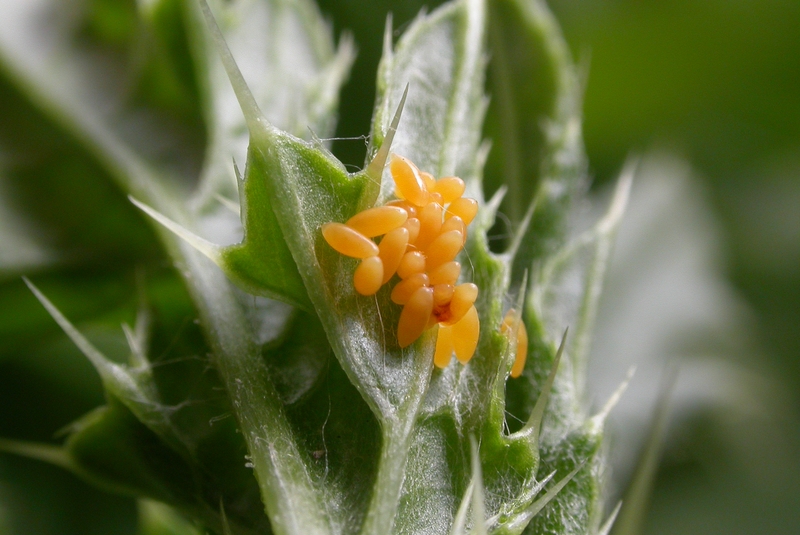

An absence of reproductive diapause in males and pre-hibernation mating are other significant adaptations, along with the tendency to produce offspring in excess of the carrying capacity of local food resources. The ability to temporarily suspend oviposition, combined with heterogenous volt- inism and diapause tendencies, enable a portion of C7 populations to feed and reproduce on unpredictably occurring aphid popula- tions. Given its high mobility and eurytopy, the inhibition of ovi- position in the presence of conspecific larval trails represents an adaptive advantage that favors increased egg dispersal and lowers the risk of offspring mortality due to cannibalism. Although these traits appear to be neutral or negative, many aspects of population plasticity are advantageous for C7, often acting in concert with a bet-hedging strategy. axyridis and Adalia bipunctata, whereas it is not an intraguild predator of these species.

Although adult size is large, preimaginal stages are palatable to those of H. The intraguild status of C7 is intermedi- ate. C7 is euryphagous, but less polyphagous than Harmonia axyridis or Coleomegilla maculata in that it cannot develop or reproduce on non- aphid food. Factors were examined that could be responsible for the predominance of Coccinella septempunctata (C7) in most habitats of the Palaearctic and for its successful invasion of the Nearctic Region. Coccinellidae, ladybirds, Coccinella septempunctata, Harmonia axyridis, Adalia bipunctata, Coleomegilla maculata, biological control, diapause, diet, foraging, intraguild predation, migration, oviposition, polyphenism, reproduction, voltinismĪbstract. Why is Coccinella septempunctata so successful? (A point-of-view)ġInstitute of Entomology, Biological Centre, Czech Academy of Sciences, ýeské BudČjovice, 37005 Czech Republic e-mail: 2Department of Entomology, Agricultural Research Center-Hays, Kansas State University, Hays, Kansas, 67601 USA e-mail: Thermal microhabitat use enables these beetles to complete an additional generation in winter.Why Is Coccinella Septempunctata So Successful? (A Point-Of-View) Prey aphids were also abundant during the winter. Although ambient winter air temperatures of this region were not high enough for the beetles to complete their development, the use of thermal microhabitats enabled them to do so by thermal conduction. The artificial substrates were relatively easily warmed by solar radiation and were therefore used as thermal microhabitats by the beetle. We found that, even though natural substrates were available, the beetle preferred to use artificial substrates such as metal cans (iron or aluminum), papers, and wooden materials discarded on the slope as oviposition and pupation sites. We studied microhabitat use patterns of this beetle in winter on a sunny slope of a southeast-facing riverbank. However, variations in life cycle within populations have been observed: hibernating and reproductive adults simultaneously coexist in the same habitat in winter. Most central Honshu populations of the ladybird beetle, Coccinella septempunctata L., pass the winter as quiescent adults.


 0 kommentar(er)
0 kommentar(er)
